Miss Universe Philippines 2022, the 3rd edition of the Miss Universe Philippines, is all set be held on 30th April 2022 at the Mall of Asia Arena in Bay City, Pasay, Metro Manila, Philippines. Beatrice Luigi Gomez of Cebu City will crown her successor at the end of the event finale. The winner will represent the Philippines at the Miss Universe 2022 pageant.
The Top 32 finalists are all engaged in the final leg of the competition, the organization hosted the National Costume Presentation for this year’s edition on 26th April 2022, where the stunning divas showcased some magnificent and majestic ensembles.
The theme for this year’s National Costume presentation was HABI (weaving), according to which 30% of the finalists' costumes should be comprised of Philippine textiles or weaving, celebrating the Philippine textile industry as an integrate part of the uniquely beautiful history.
It represents the rich stories and craftsmanship of different tribes and communities throughout the archipelago. Apart from promoting tourism, the Miss Universe Philippines Organization also aims to promote and put forward Filipino textiles and weavings because these are treasures they can't afford to lose. This is an industry they want to continue and help strengthen.
While all the costumes showcased at the presentation were larger than life and celebrated the Filipino creativity and artistry, some attires outshined with intricate designs and details. So, without any ado, here are our Top 10 favourite national costumes of Miss Universe Philippines 2022 –
Katrina Llegado
Taguig’s Katrina Llegado donned Pablo Mendez’s beautiful creation, ‘Treasures of Water Lily’. Made out of dried lilies the costume was designed in collaboration with Taguig Waterlily Livelihood Center. Eco-friendly handicrafts like this costume provide a viable income for the home-based women workers of Taguig City through weaving and marketing their produce.
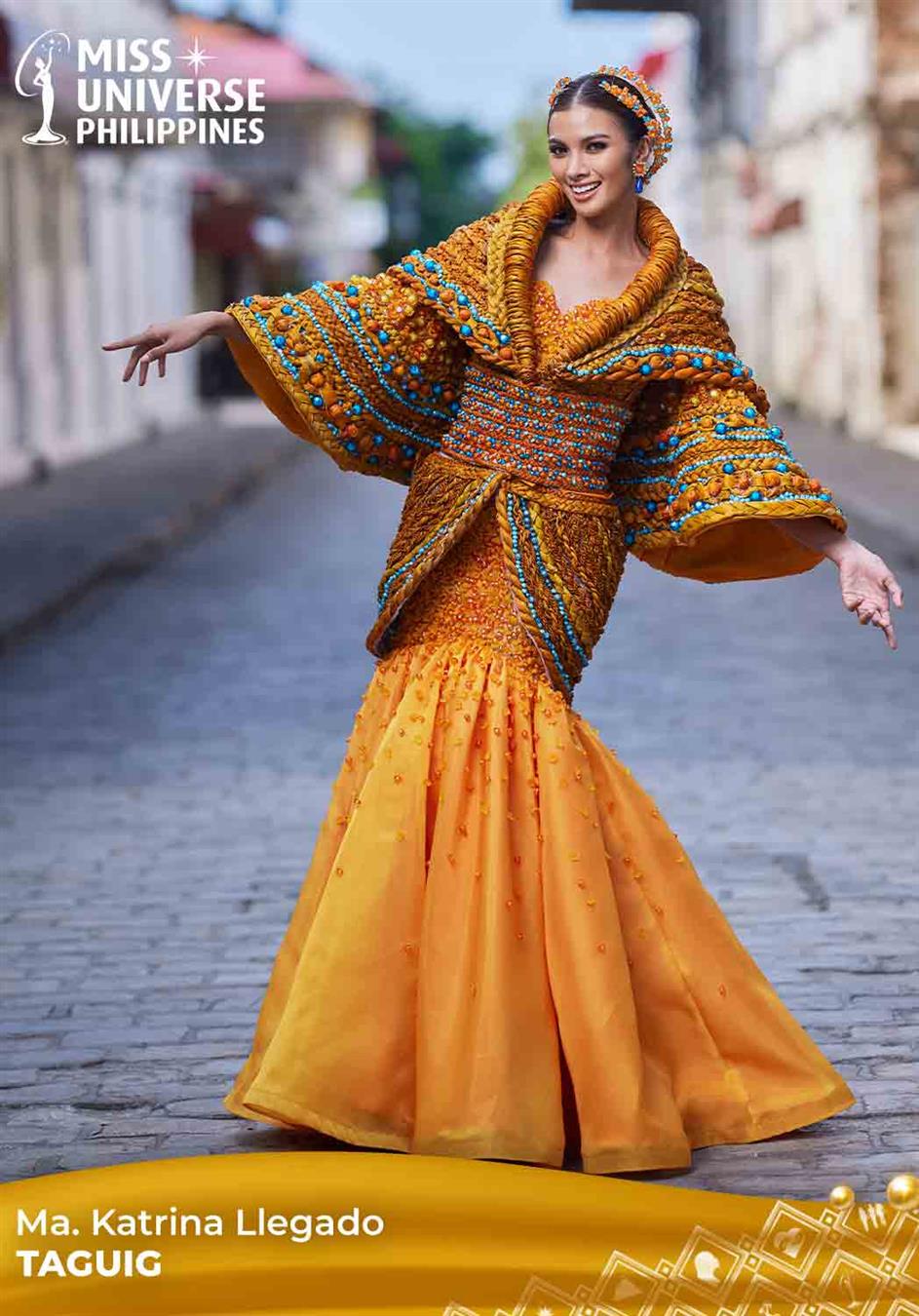
Michelle Marquez Dee
Michelle wore a modern take in the tradition Maria Clara by Francis Libiran inspired by our country’s rich heritage and history. The María Clara gown, sometimes referred to as Filipiniana dress or traje de mestiza is a traditional dress worn by women in the Philippines. Made purely of Philippine textiles such as abaca and piña, this ensemble was hand-crafted with bejeweled embroidery, depicting a Filipina’s understated elegance and simplistic beauty.
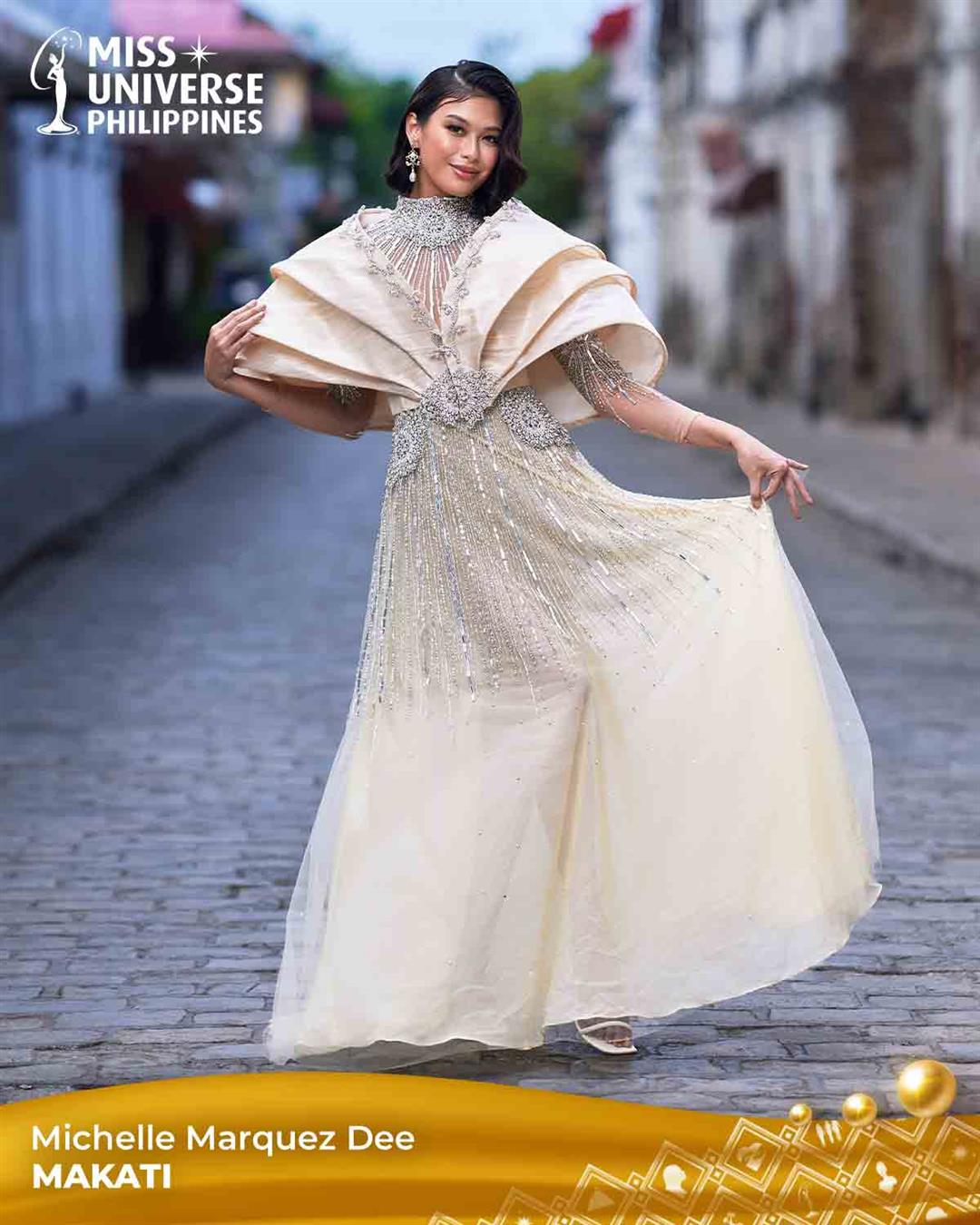
Lou Dominique Piczon
Wearing Danny Booc, Lou showcased a modern Filipiniana made of 95% banig, a hand woven art from Badian of Cebu Province. Inspired by local women who have been weaving banig for generations as one of their livelihood, this National Costume showcases the Banig Festival Queen, in her full regalia embellished with wooden beads, abaca ropes, rhinestones and back details depicting the magnificence of Cebu Province.
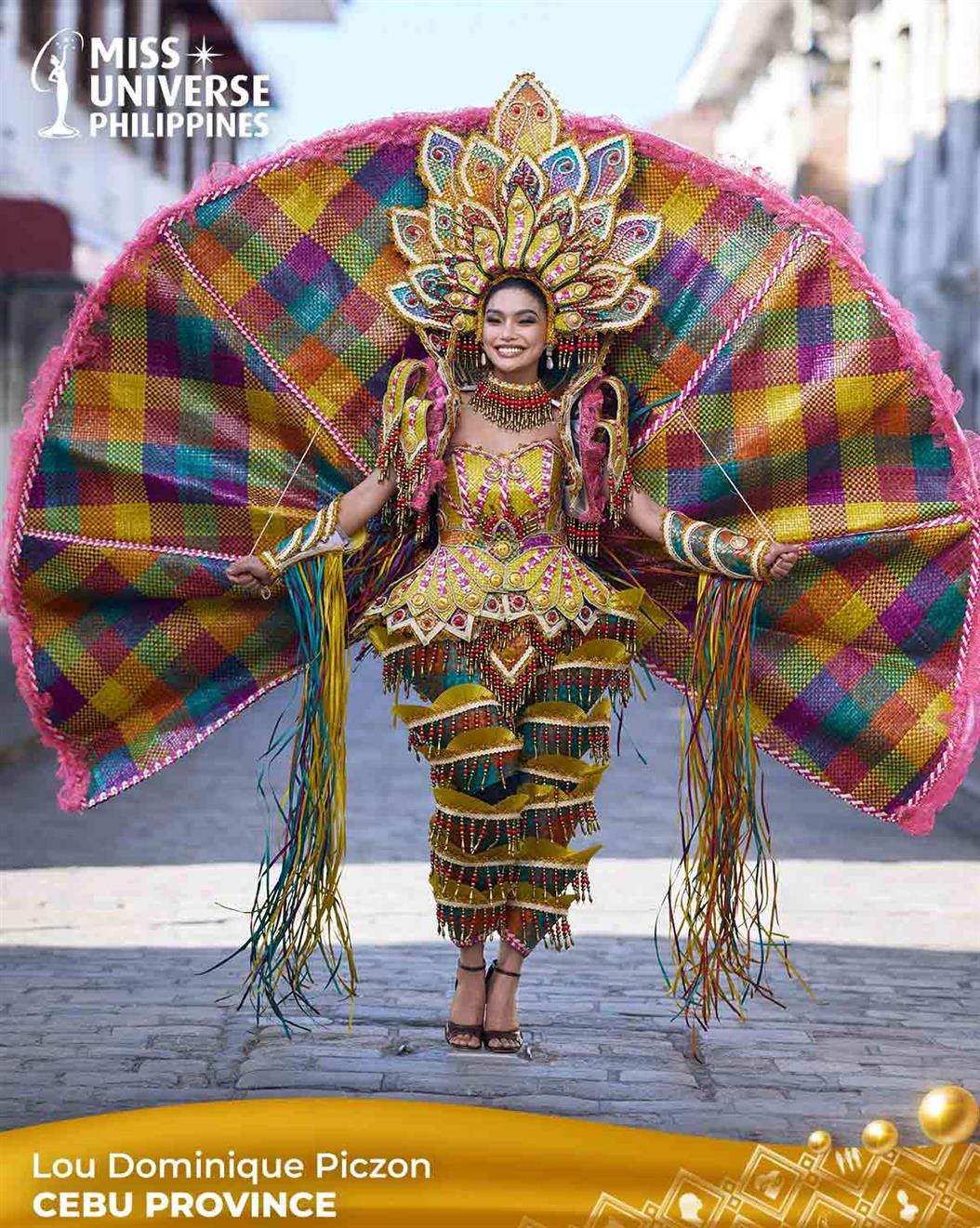
Jedidah Korinihona
Jedidah donned a masterpiece designed by Nicky de Asis, which was an interpretation of a modern Bagobo Tagabawa who is vivacious, tenacious in the face of adversity, and cooperative in the preservation of Mindanao's colorful cultural heritage .The design ensemble is inspired by a ‘Kuda,’ a Bagobo Tagabawa word that means "stallion or mare," and represents determination, endurance, freedom, beauty, and spirit.
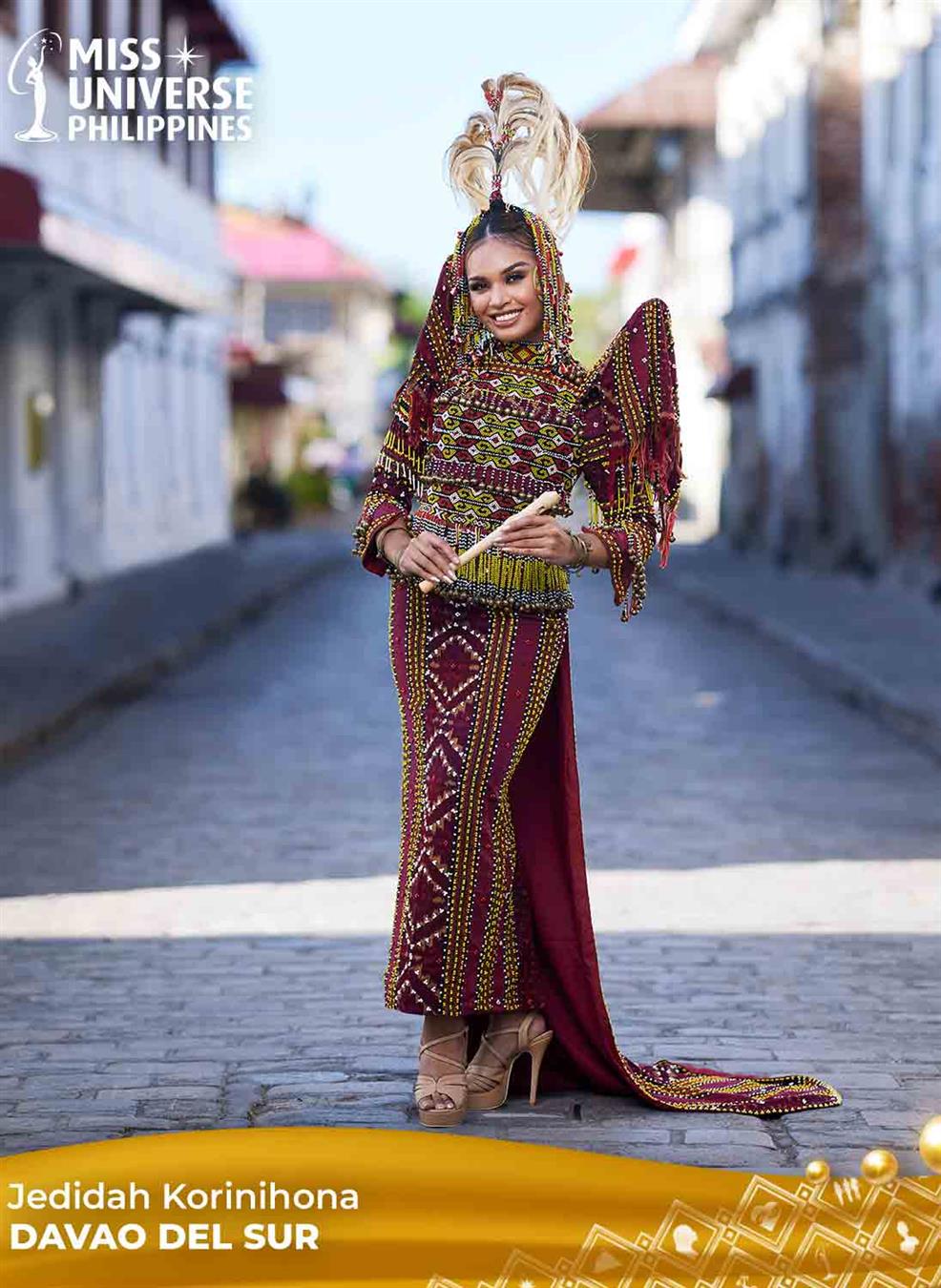
Jona Sweett
Using 100% piña fabric, Jona’s attire was designed by Samar Adriano in collaboration with Mel Grecia Quimpo, Shie Reynaldo and Aklan Piña Cloth Industry. This national costume was inspired by the Ati-atihan festival participants who paint their bodies black with charcoal. Its piña fabric adorned was with ornamental patterns using the callado technique, known for its intricate hand-threading work style.
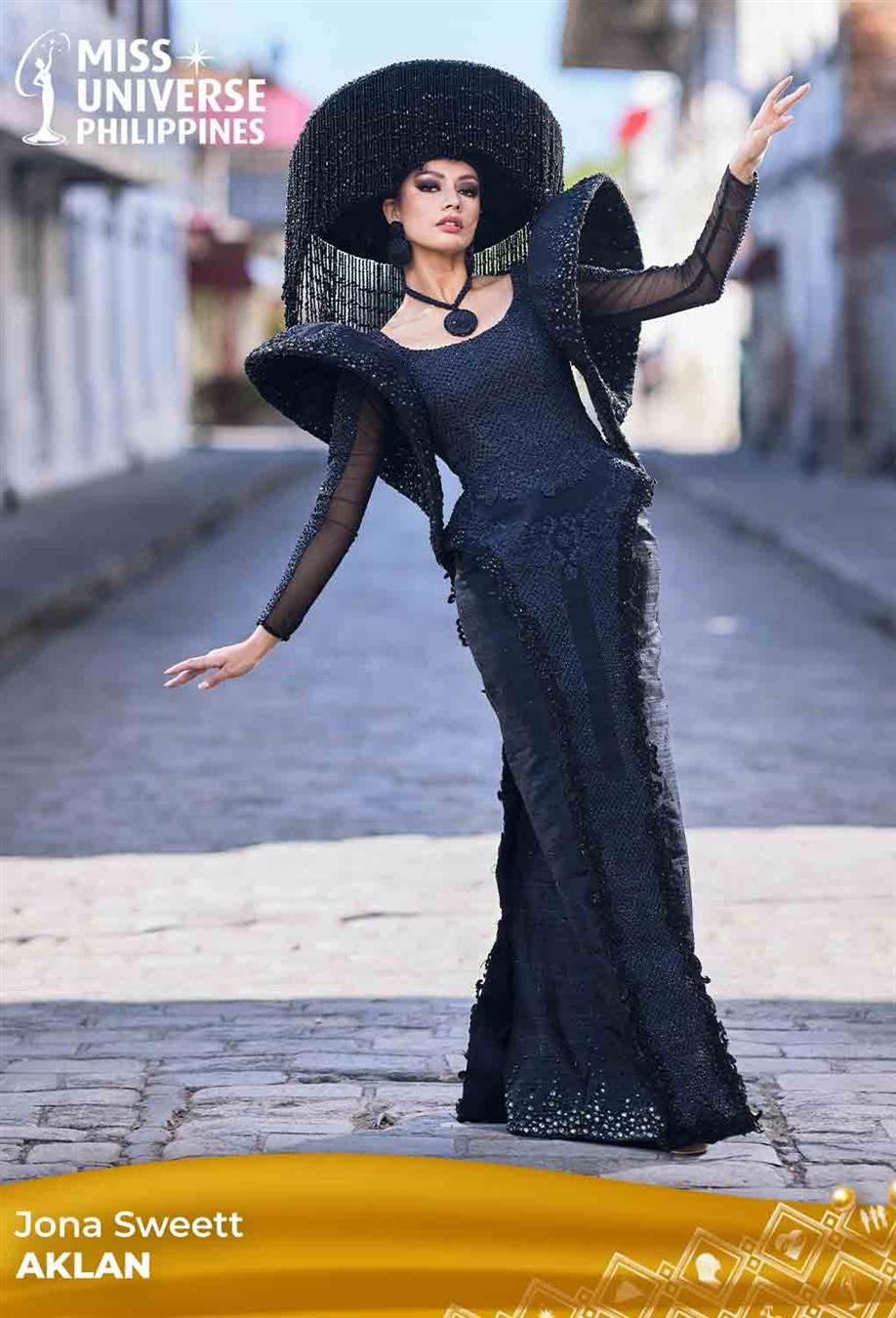
Julia Saubier
Saubier wore the stunning ‘Hulya’ costume by Erjohn Dela Serna, which was a modern on Haliya, the Bicolana Goddess of Moon, in moonlight blue. It was an ode to Haliya and the warrior women of the Philippines in its mythology and beyond it. Haliya is the masked goddess of the moonlight worshipped in pre-colonial Ibalon. She is fierce, strong, and a real protector. Drawing on the weaving traditions of the Philippines, the intricately designed costume, bow, and arrow were made of Ifugao, Mountain province and Tinalak weave, and another fine weave of Pinilian Abel Iloco to accentuate the whole look.
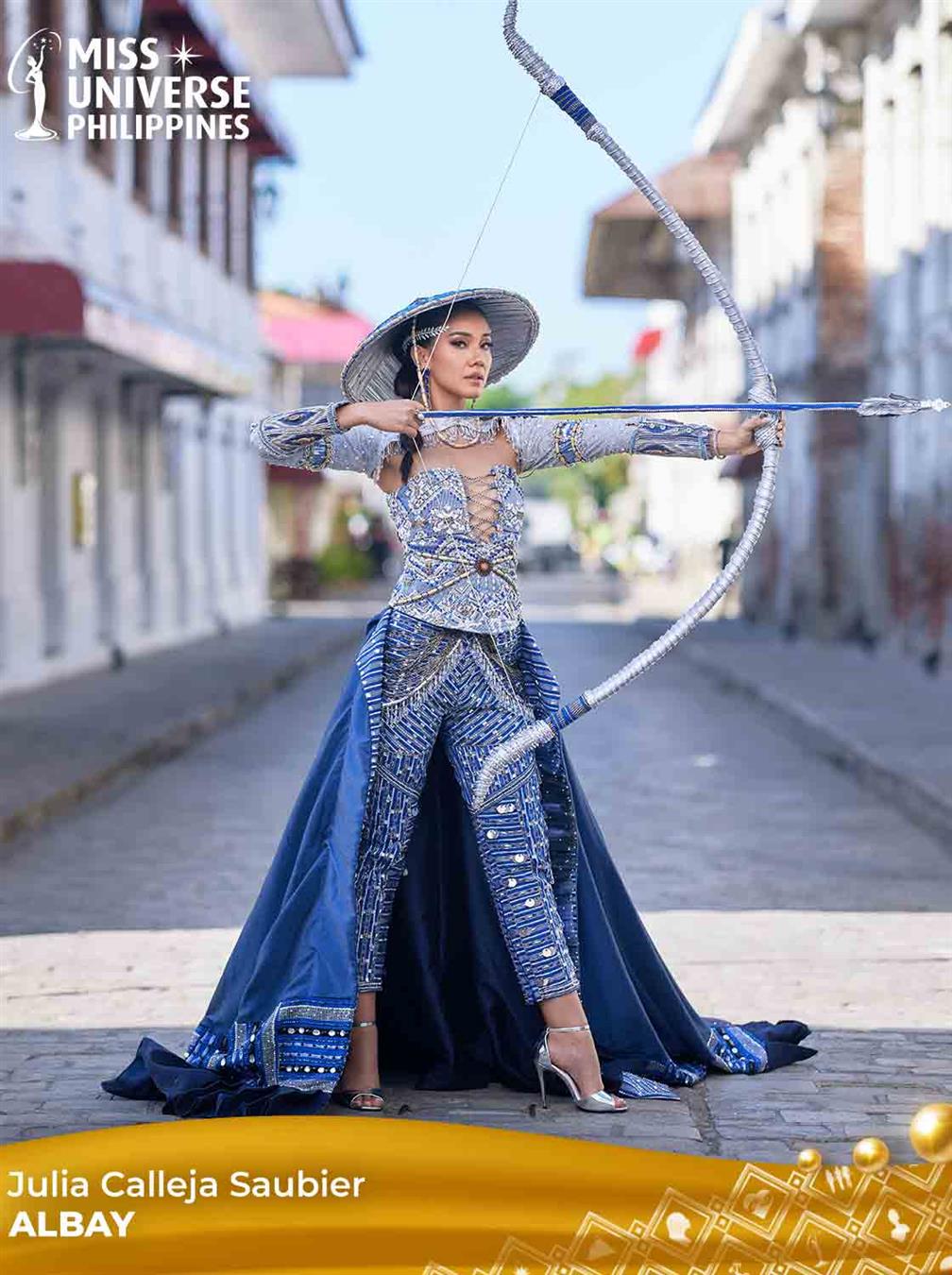
Ghenesis Latugat
Dressed as a Kalinga Warrior of Peace, Ghenesis wore an Erjohn Dela Serna design. The outfit, according to her, perfectly encompasses who she is and what she fights for, translated in a way, that she could only dream of. She represented the Gaddang and Guilayon tribes as she strutted with this close to a hundred per cent ensemble made of Gilamat, Ilat-ata and Modern Kalinga weaves.
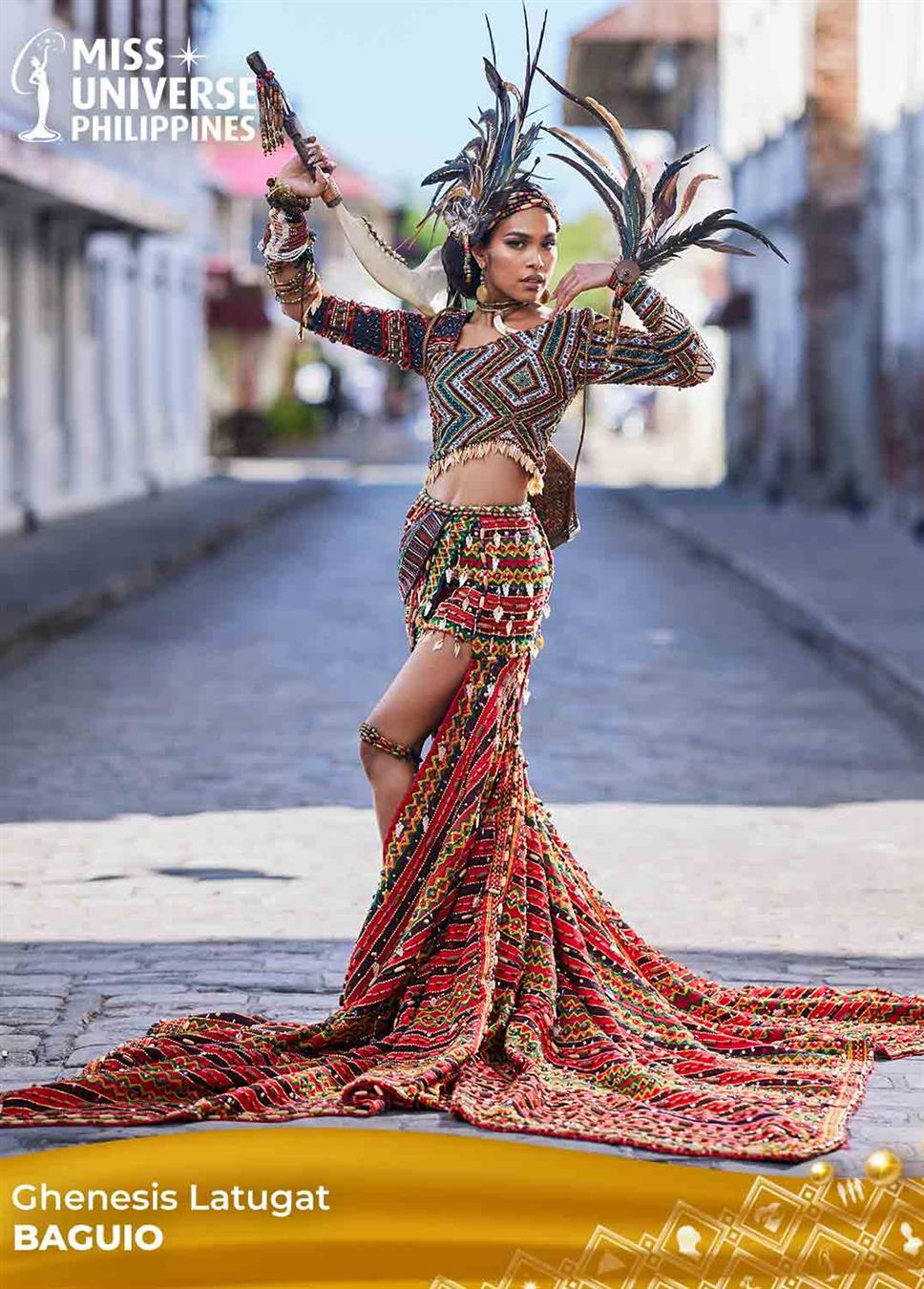
Chantal Schmidt
Schmidt donned the ‘Pearl of the Orient Seas’ design by Axel Que, showcasing the beauty and bounty of the Philippine seas materialized. With a simple yet intricate design on her body beaded with beautiful pearls, the diva also adorned heavy and majestic winged-sleeves with tassels and beautiful details.
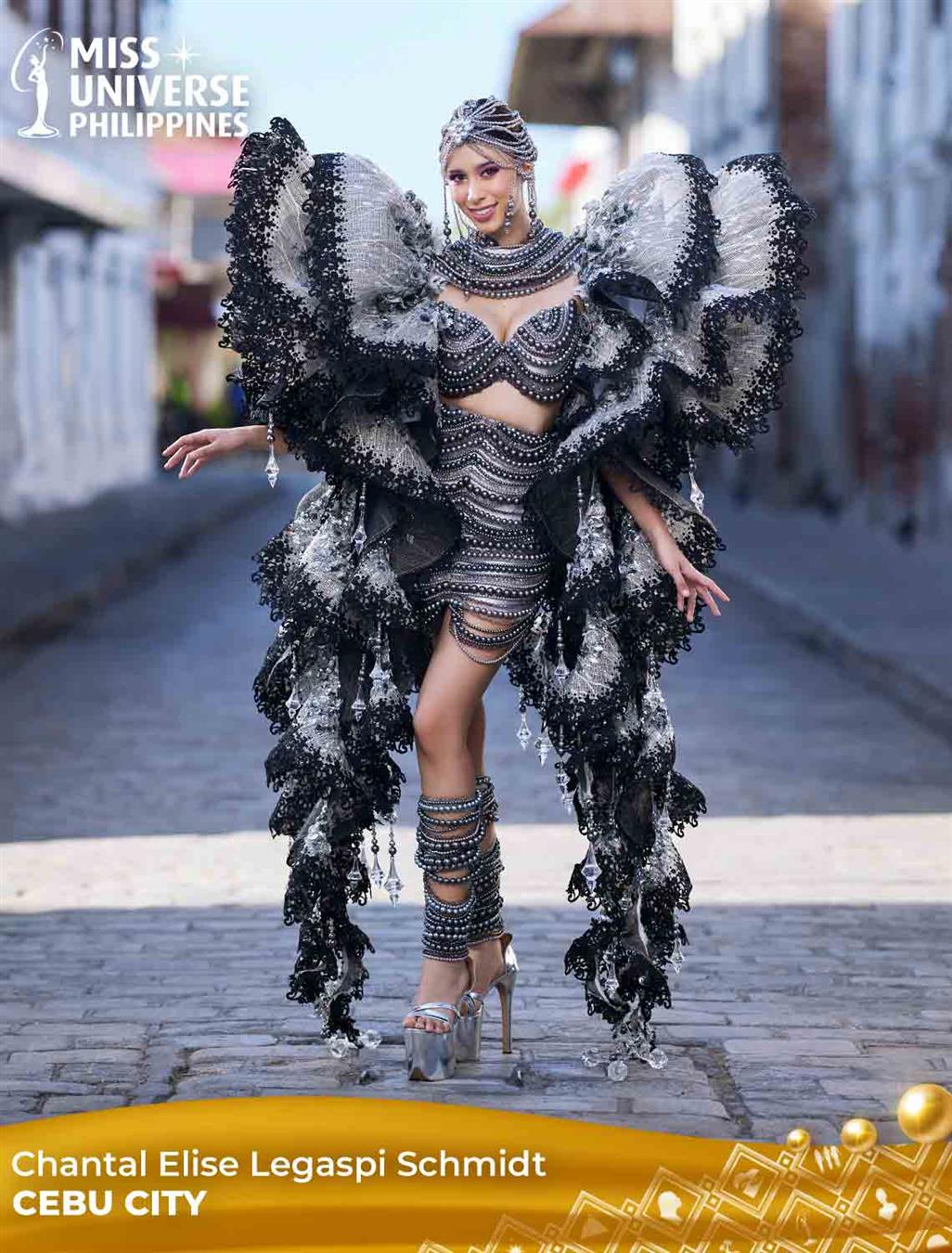
Alyssa Felix
As a homage to Macabebe, Pampanga's history, faith, and livelihood, Alyssa wore the ‘Karo’ costume designed by Rowell Panlilio. The costume was also a taste of the town's own festival, the Santero festival, which honors all the craftsmen who work with wood, ivory, cement, or fiber glass to make an ecclesiastical artwork known as the "santo," which is often a picture of Christ, the Blessed Virgin Mary, or a saint.
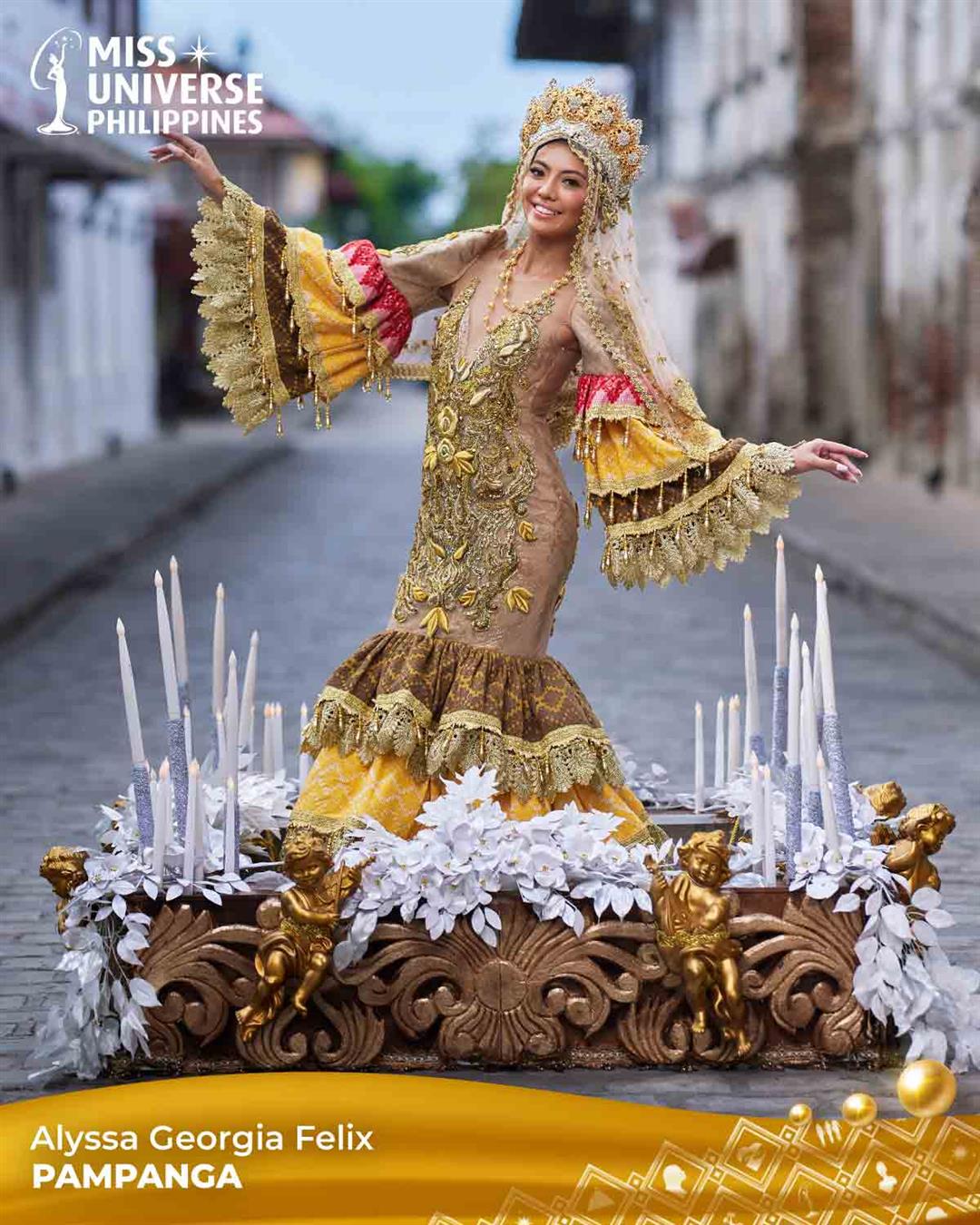
Jeanne Nicci Orcena
Orcena donned a stunning colourful and extremely detailed costume designed by Mark Joseph Sayad. The costume was inspired by the ‘Musikahan Festival’ of Tagum, Davao del Norte. A festival that showcases the love for the music of the mindanaon people. Combination of different tribal fabrics from the seven tribes of Davao del Norte combine as one created this beautiful outcome. The Gigantic trumpet symbolized how loud and proud Davao del Norte is when it comes in showcasing their love in music and arts and acknowledging the existence of the seven tribes
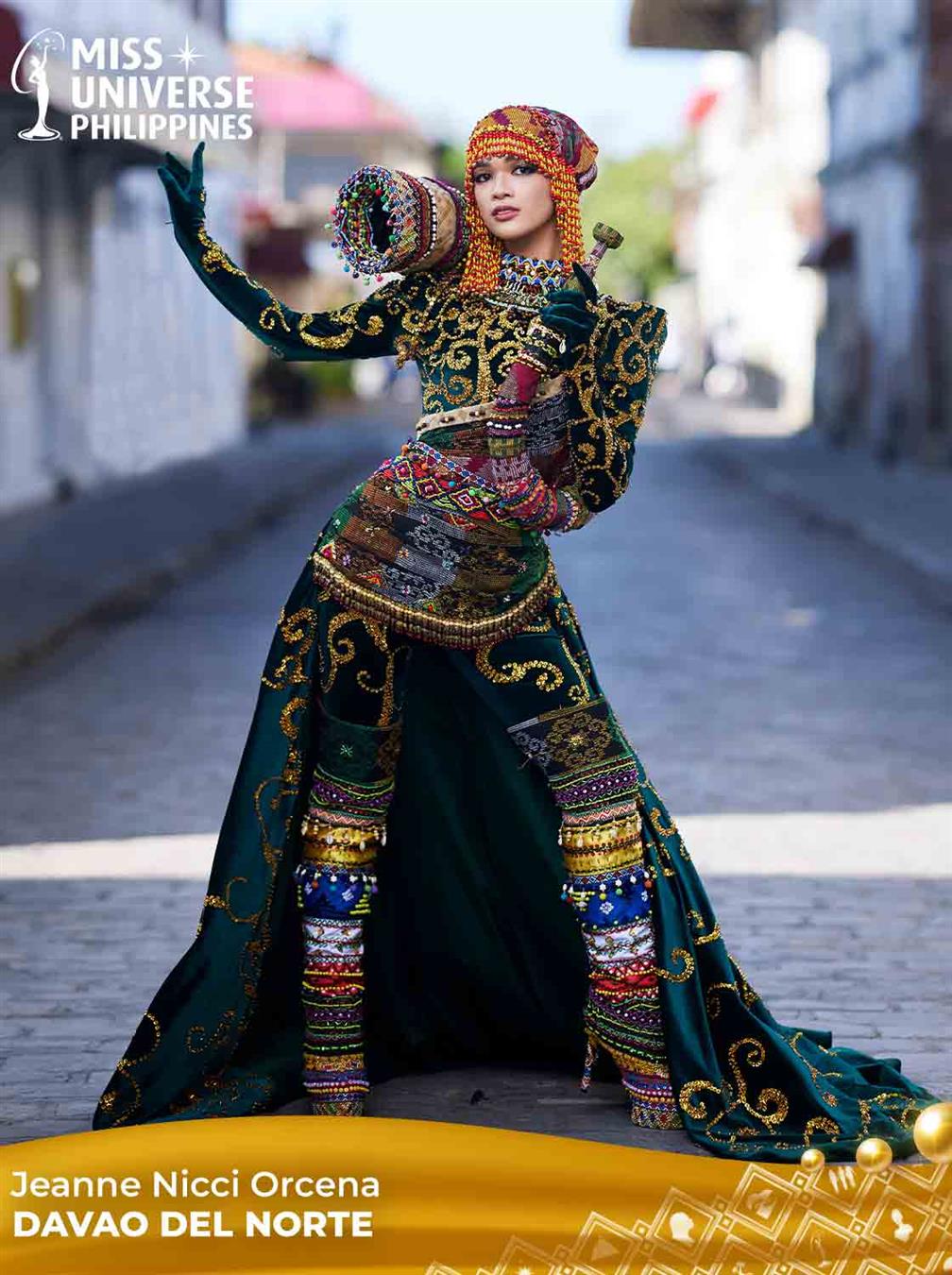
(Image Source: Miss Universe Philippines Official)